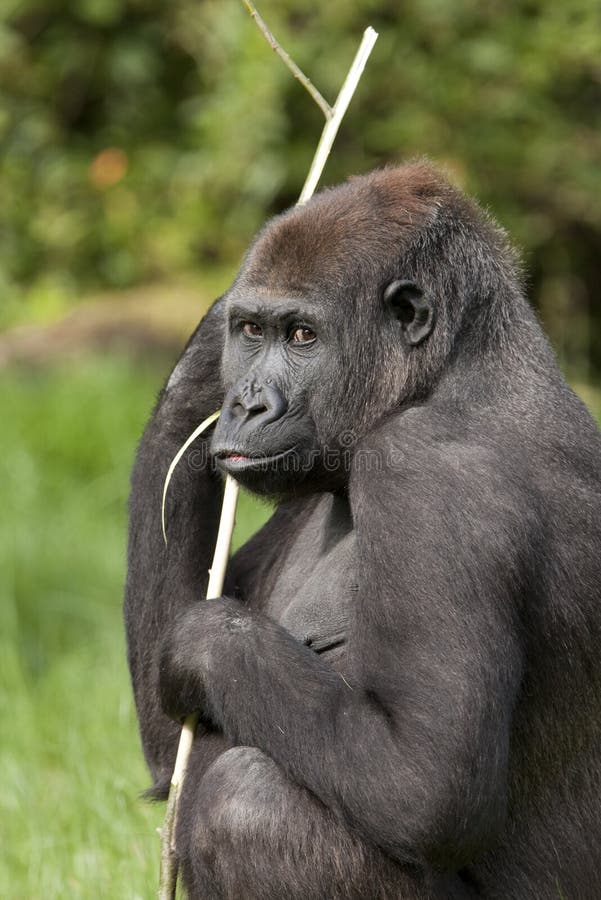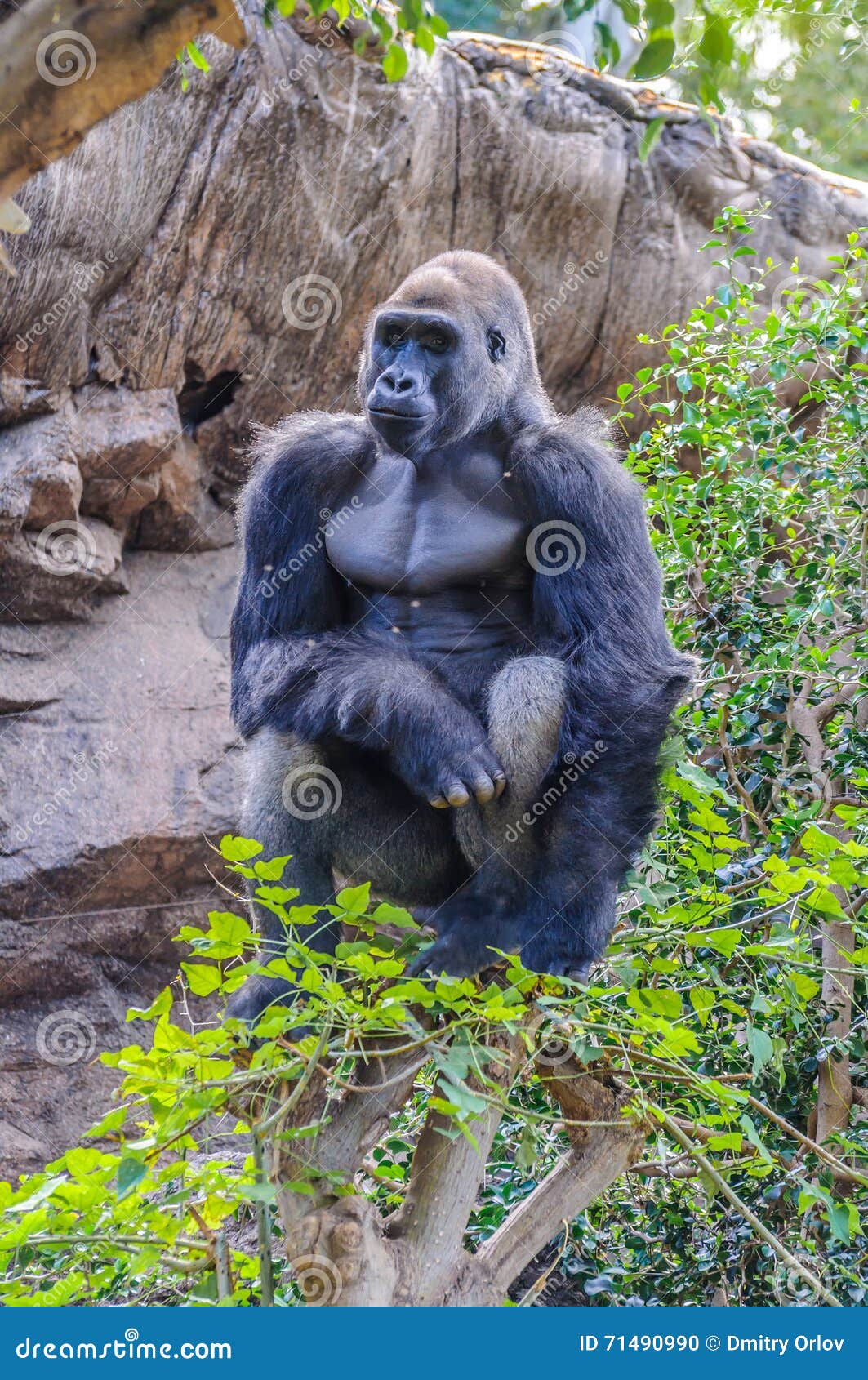

Each family group usually includes a dominant silverback male gorilla, three unrelated adult female gorillas and four or five young gorillas. The Eastern Lowland Gorilla has a well developed social structure and they live and travel in family groups. Male Eastern Lowland Gorillas are almost twice as large as females. Adult males stand 175 centimetres (69 inches) tall and weigh 165 kilograms (360 pounds). Like other gorillas, the eastern lowland gorilla has small ears and broad nostrils. Like the Western species of gorilla, the Eastern Lowland Gorillas walk on all fours, however, they use the knuckles on their hands instead of their palms.Įastern Lowland Gorillas are more robust in appearance than the Western Lowland Gorillas, having longer teeth, a stronger jaw and a broader body.Įastern Lowland Gorillas have black coats which in males, like other gorillas, turns silver at the back as the animal matures. While its not clear whether Project Koko has taught us whether gorilla’s deserve legal personhood, she has certainly created a lasting impact on our understanding of animal sentience.īy Brianna Lynne, Earth.The Eastern lowland gorilla (Gorilla beringei graueri) is found only in the tropical forests of eastern Zaire, Africa. The orangutan will now be sent to a sanctuary or another home outside of the zoo. An Argentina court recently ruled that an orangutan held in captivity has the legal right to life, liberty and freedom. The idea has gained traction in other countries. Even people who cannot grasp these qualities, such as comatose and infant humans, are considered people. People possess certain qualities such as self-awareness, compassion and grief but science continues to show that we may not be the only ones with these qualities. Some animals, such as Koko, have the intelligence level of a human toddler. They argue that these species display a level of self-awareness and autonomy that warrants legal rights. The Nonhuman Rights Project is currently working to secure legal rights for great apes, elephants, dolphins and whales. One question that has been making headlines in the news is whether these sentient species can legally be defined as persons. If animals are far more intelligent and emotional than we previously predicted, it brings about many questions. Even pigeons have been able to sense space and time, as we recently reported. Cows form close friendships with other cows. We now know that elephants can grieve the death of their friends and even visit the grave sites after the death. Western lowland gorillas are far from the only species that display human-like features. Even if this was true, Koko’s ability to interpret the researchers’ desires shows a high level of cognition. Critics say that researchers may have solicited certain responses from Koko. Some have questioned the results of Project Koko. In fact, Koko was the first gorilla to pass the mirror self-recognition test which researchers use as one indicator of self-awareness. Her most famous example of self-awareness came from a photograph she took of herself which was featured on the cover of National Geographic. Koko has even shown self-awareness throughout her lifetime by using personal pronouns, discussing her own emotions and making value judgments. She also regularly used emotionally charged words such as happy, sad, afraid and mad. Her trainers noted that she seemed upset by the kitten’s death for years afterwards. When her pet cat died, Koko signed “cat, cry, have, sorry, Koko, love”. Koko expressed grief at multiple points in her life. Not only did Koko know over 1,000 signs, displaying an intelligence level of a human toddler, but she also showed a broad range of emotions, previously only assumed to be held by humans.

Since “Project Koko” began in 1972, she challenged our ideas on what animals are capable of. Koko was a huge part of this change in viewpoint.

Since then, our understanding of animal intelligence and emotional capabilities has grown. Animal cruelty was only illegal against animals owned by another person because animal cruelty was seen as destroying someone’s property. This law identified animals as “brute creature”, reflecting the largely held belief at that time that animals operated simply as machines. The founding of the United States brought about the first animal cruelty law passed in 1641 by the Puritans of Massachusetts. With her recent passing comes an opportunity for us to continue to explore and expand our knowledge of animal intelligence and sentience. Koko, the western lowland gorilla who died late last week, surprised and inspired the public throughout her lifetime.


 0 kommentar(er)
0 kommentar(er)
